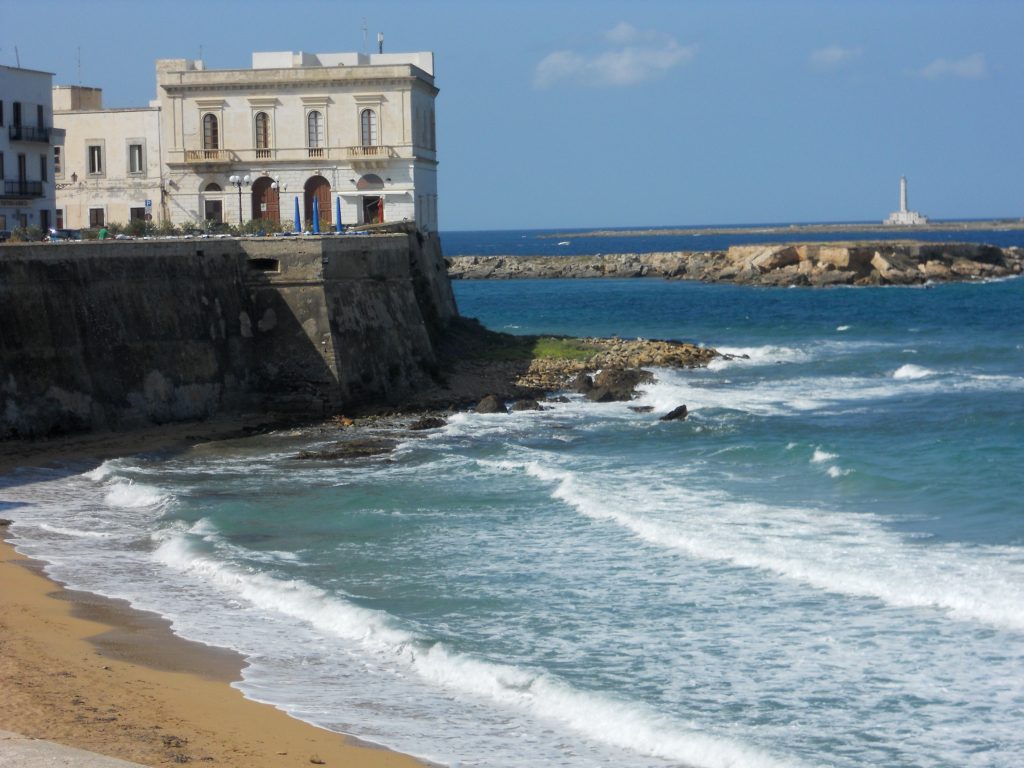Il Salento- Gallipoli
I wish I could wear high heels; I wish I knew how to walk in them. I never learned. I was one of those gauche teen-aged girls that found no pleasure in dreaming of my first high heeled pumps.
Today, a pair of Laboutins, hold no fascination for me, and my head turns rather to admire the Alexander McQueen scarf twirled carelessly around the graceful neck of a svelte mannequin.
But while I’m really not interested in the vertiginous stilts so in fashion today, I do concede that the tall slender profile of the high heel possesses an air of sultry and sensuous allure that captures the stare of the admirer as it casts its spell.
It is no wonder then that the high arched and shapely boot that is the Italian peninsula do the same. The heel, in particular, like a beautifully sensuous stiletto, entices with it’s mystery, and its magic. With its seductiveness.
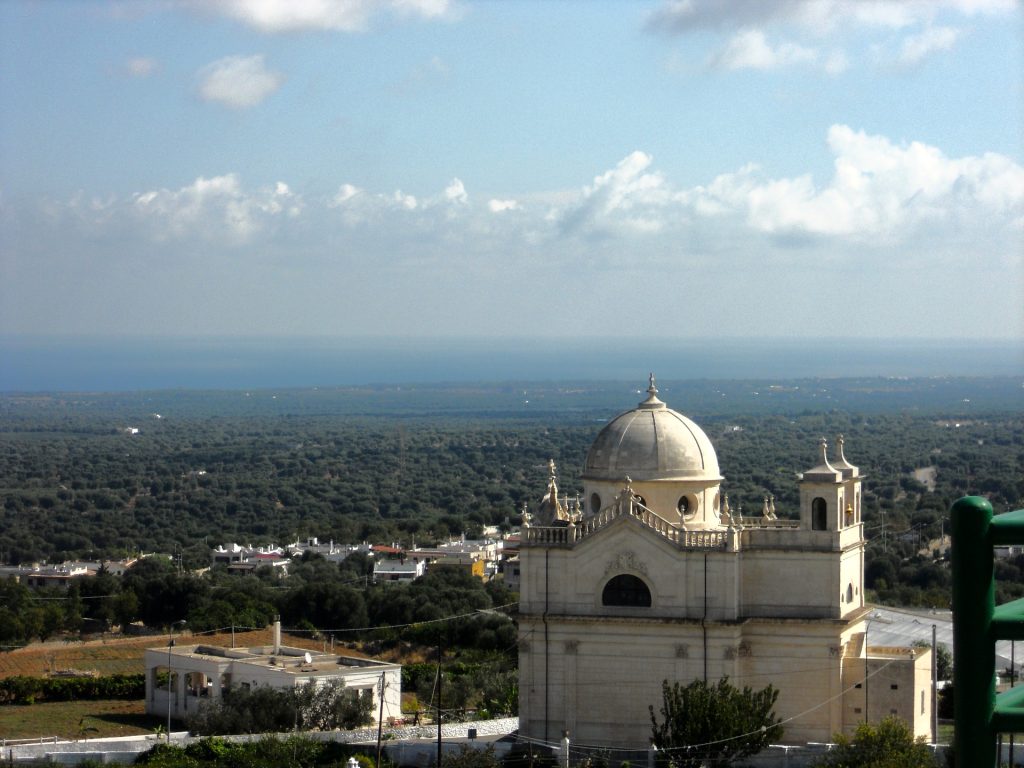
This sultry and remote part of Italy is known as Il Salento, and it spans the heel, from Brindisi across to Taranto and down to the farthest, southernmost point of Italy, Santa Maria di Leuca. It is nothing like the rest of Puglia to the north; no verdant pastures, few cultivated fields, no fertile rich brown earth. Here those luxuriant and dense fields of the Valle d’Itria submit to a flat, sepia coloured landscape rendered gauzy and ethereal from a veil of wildflowers in the spring and olive groves that stretch as far as the horizon. The aromas that emanate from this ground and waft through the air are captivating and flirtatious; at times strong and pungent and then suddenly, sweet and beckoning. A dramatic quality of light, a combination of the luminous blue of the sea and the terra cotta colour of the earth, paint this canvas with unique and dazzling tones. It is an ancient land that evokes scenes of plunder and infiltration by the neighbouring Greeks and Turks. In fact, many of the coastline towns, white and resplendent atop their mountainous perch retain a flavor of their Greek past.
My first view of Gallipoli is of a broad expanse of coastline with a low lying silhouette, very characteristic of Turkey. In fact, I wonder for just a moment if I haven’t landed in the very iconic Turkish town of the same name. Gallipoli, the guide book informs me, means “beautiful town” in Greek. It sits along the coast of the Ionian Sea, protected by the warm gulf streams right below the arch of the boot.
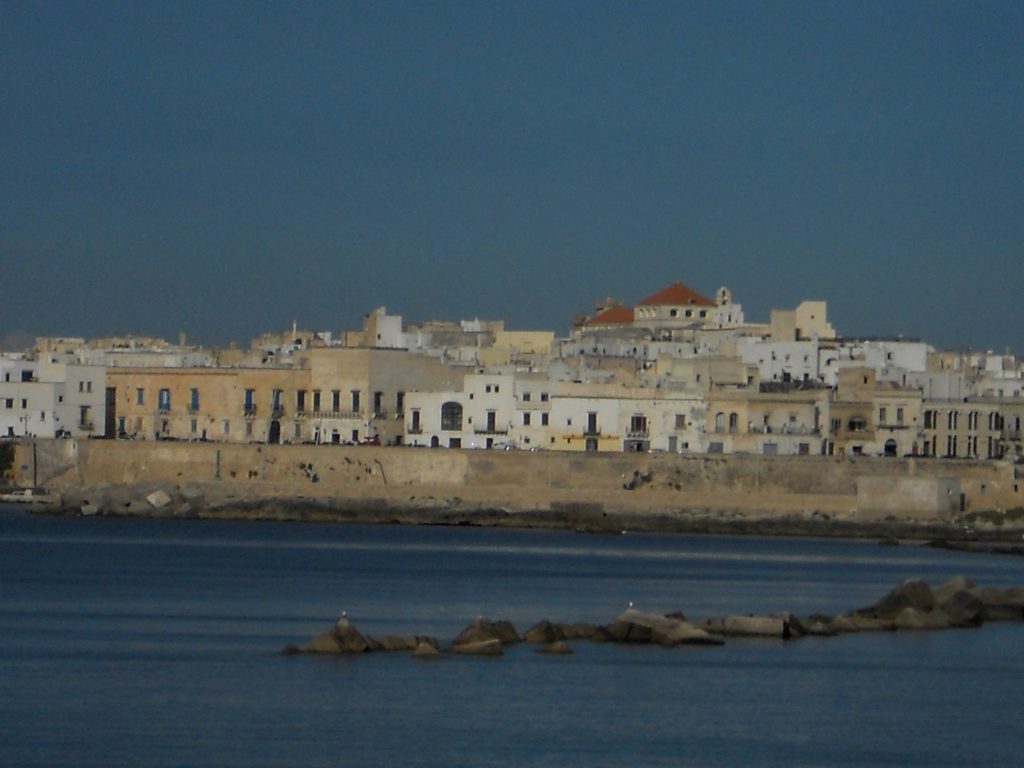
I enquire about the centro storico or downtown core of the town; surely there must be something more characteristic and interesting than the modern place I find myself in now. This one looks like one of many other Italian, working, coastal towns: a main boulevard with trendy shops; balconies with admittedly lovely views looking out to the ramparts that look out to the sea. Still, charming as it is, I feel there must be more.
Some investigation, and a short walk later leads me to an arched 17th century bridge that connects the mainland to the picturesque old town that is an island. Once an isthmus, it is surrounded by high walls which were built to protect it against attacks from the sea. Barely across, and old Gallipoli is already exuding its charm: below the bridge a flurry of activity is taking place on the docks: fishermen sitting on low stools by their boats are mending nets; others are detangling the detritus of the day’s catch from the raveled mesh at their feet. Colourful boats are bopping in synchronized rhythm with the undulating waters beneath them and the squakish song of the seagulls.
Before me is the Angioino Castle, built to defend the city and totally surrounded by the sea. It is reflected in the water and announces a world of a time past. It still holds in its massive structure the warning of an attack on would-be trespassers. Built on a square base with four towers at the corners, its fifth tower is used as a movie theatre during the summer months, while exhibitions and other cultural events are organized in the large halls.
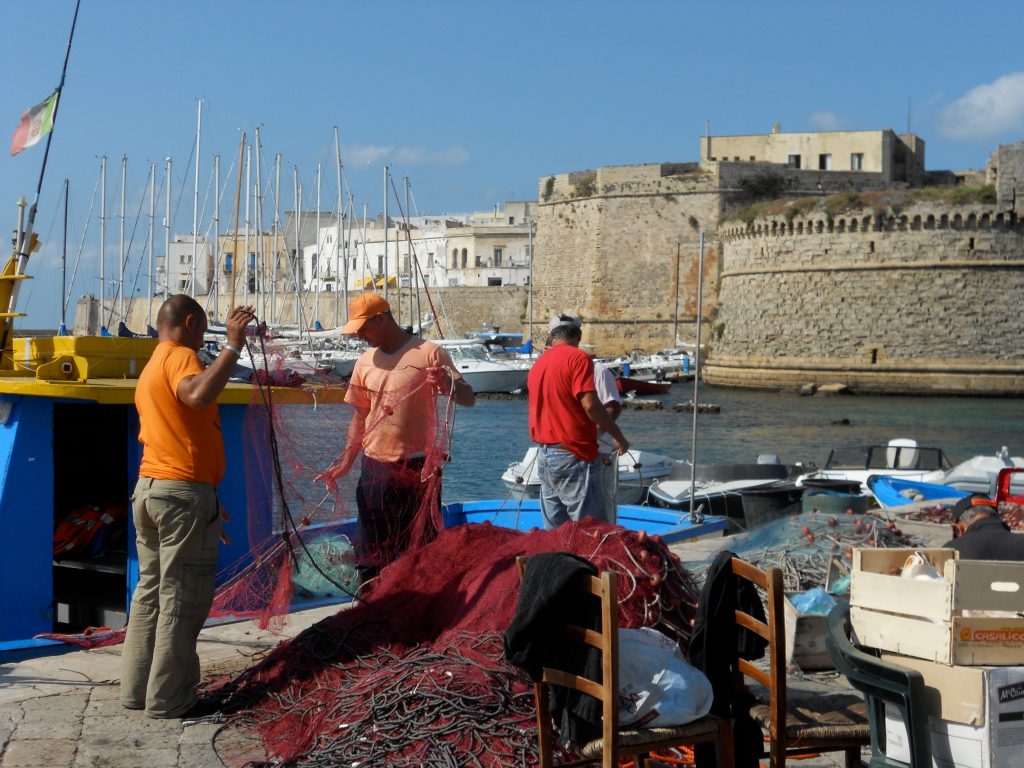
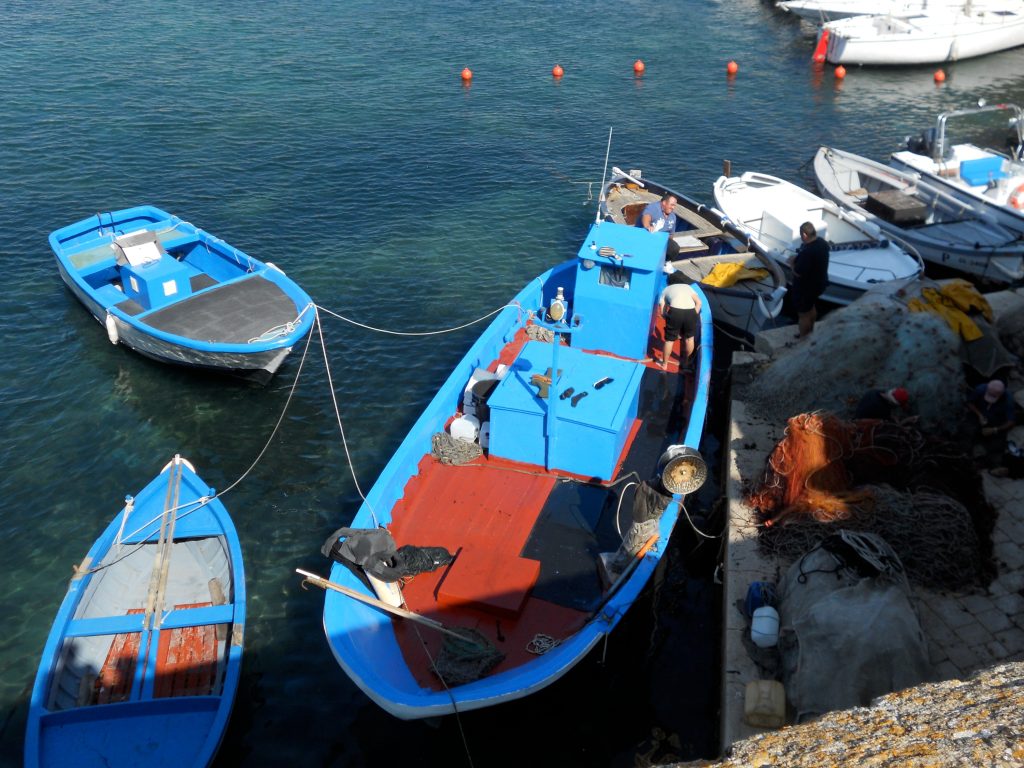
Happily, on having crossed the bridge and snapped a few shots of the busy fishermen below, I stop before an exciting find: facing the bridge stands the most magnificent ice cream place south of Rome. I think I may have serendipitously come across heaven. The shouts of a group of old men arguing by the half open door of an old church confirm that I am still among the living. Old Gallipoli greets me with this charming old world ice cream parlour that serves truly exceptional gelato: the granite are whipped and whisked Sicilian style; the ice creams are of a superb creaminess; the mousses of incomparable lightness. And if this weren’t enough, there’s such a variety of flavours, both traditional or not, to satisfy everyone. Maybe I can stop by again for a second, on my way out!
The old town seems to be still inhabited by many families of the place, unlike other historical centers of neighboring municipalities that are mostly uninhabited and then filled with touristy shops. This on the other hand makes the town particularly charming and animate. A maze of narrow winding streets lead to small piazzas and numerous churches.
As the evening light darkens the town, lights from everywhere illuminate Gallipoli.
Market stalls sell their wares along the tiny streets lit with ancient lanterns. Locals and the few tourist visiting stroll, stopping occasionally to admire local handicrafts. Restaurants come to life with amiable chatter and the clinking of cutlery. Children all run in the same direction: the ice cream parlour, l’Accademia Del Gusto.
I’m there right behind them, going for my second.
